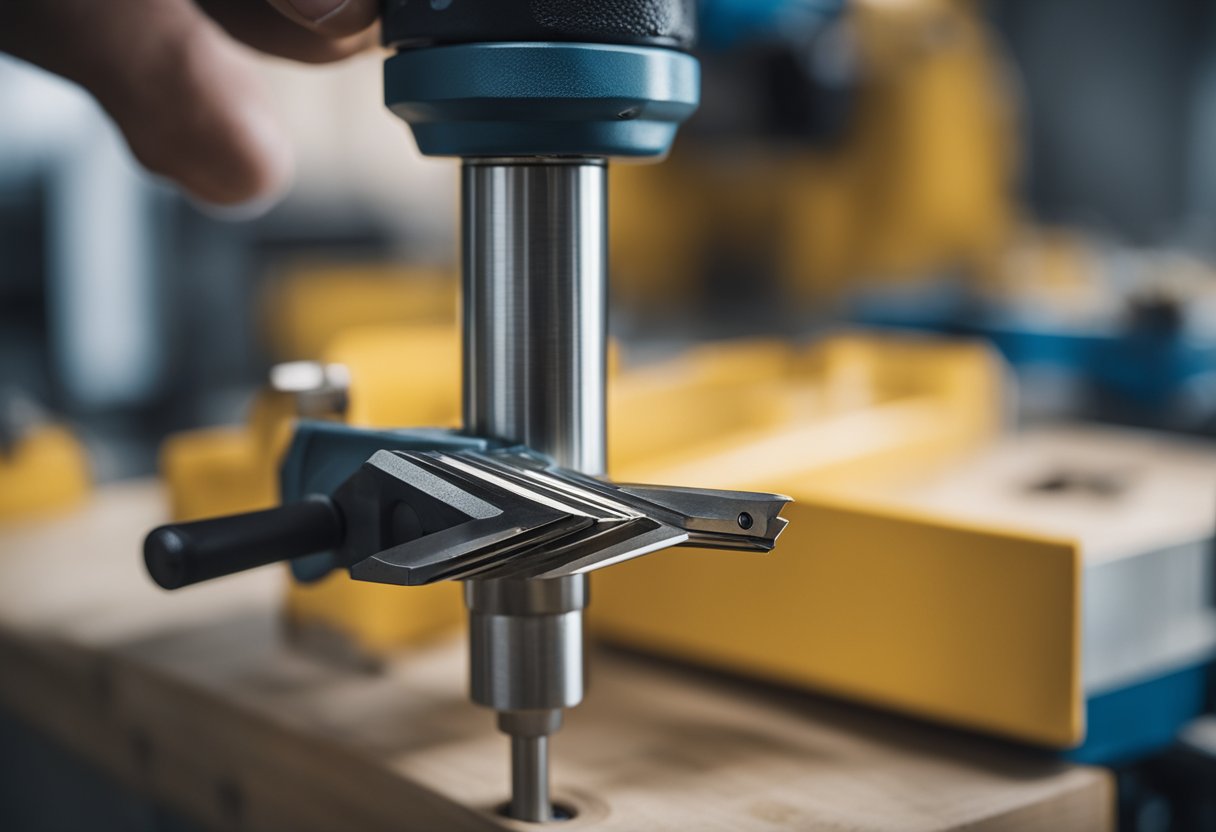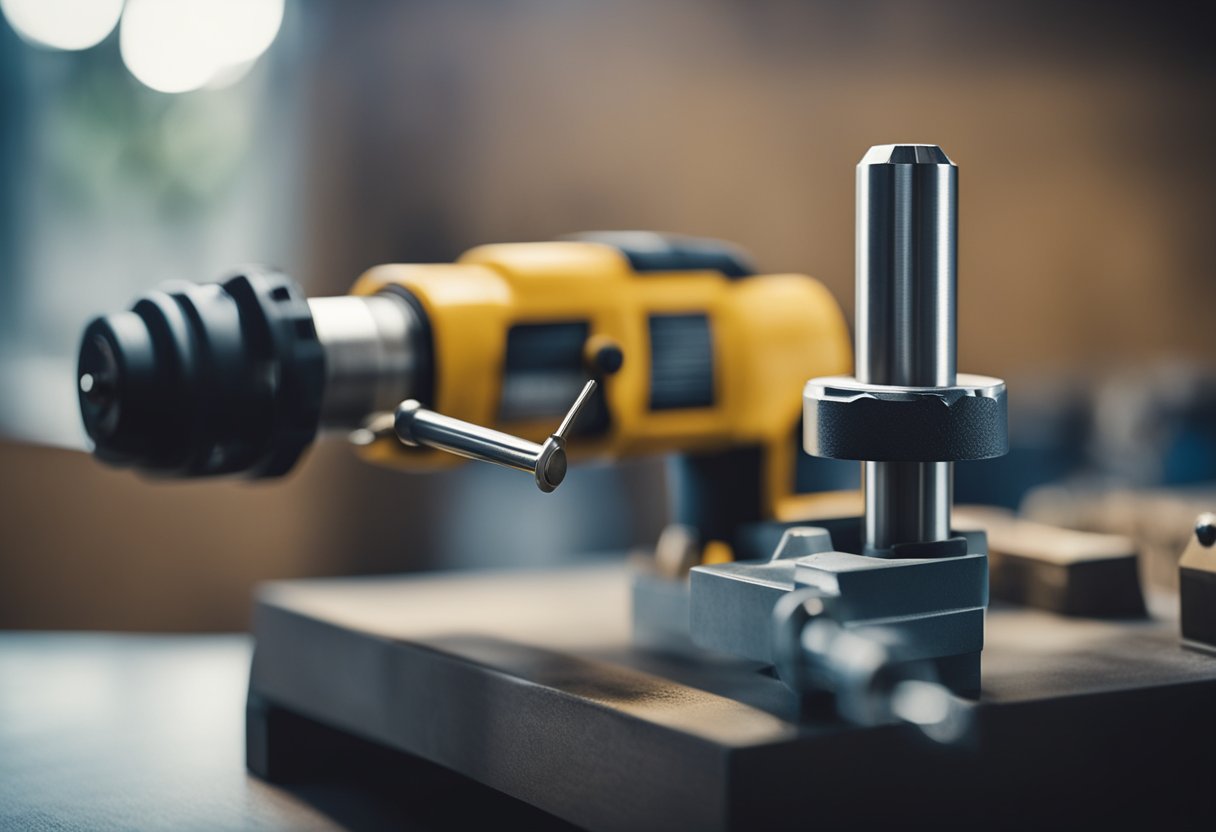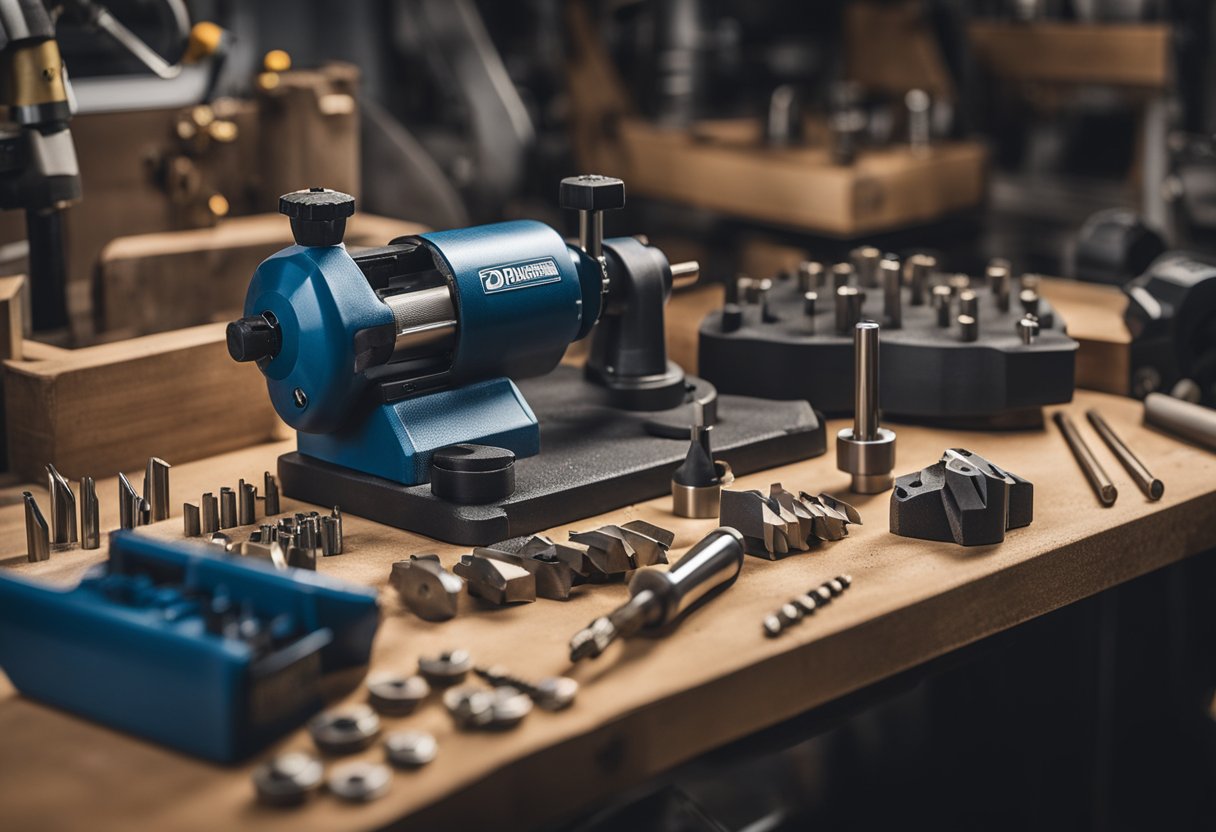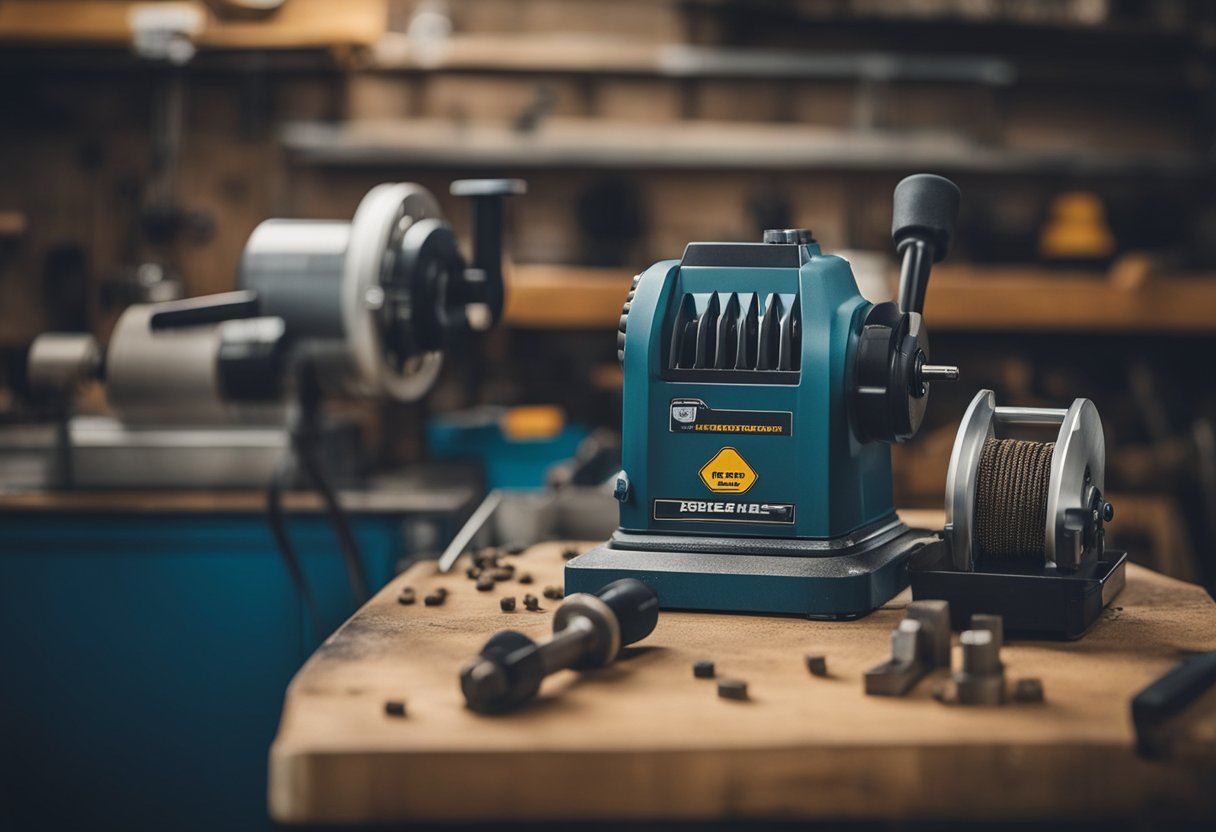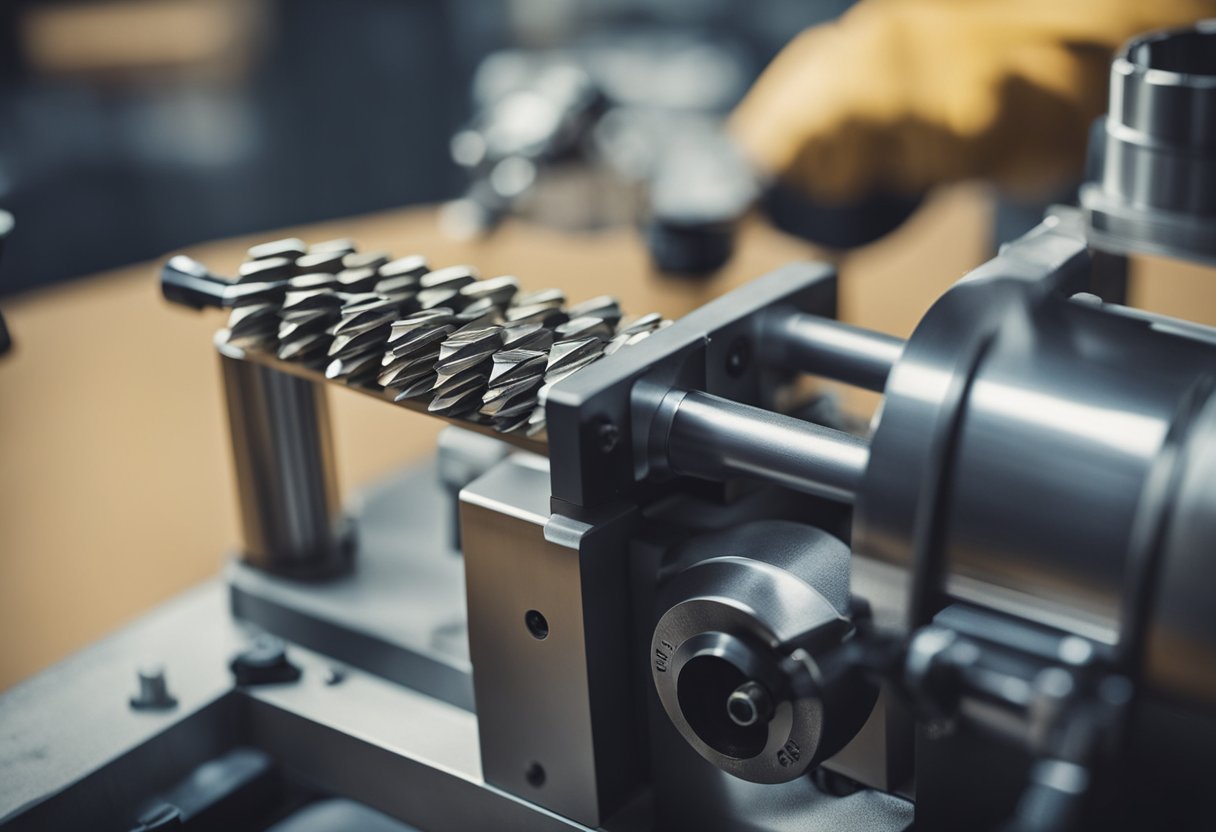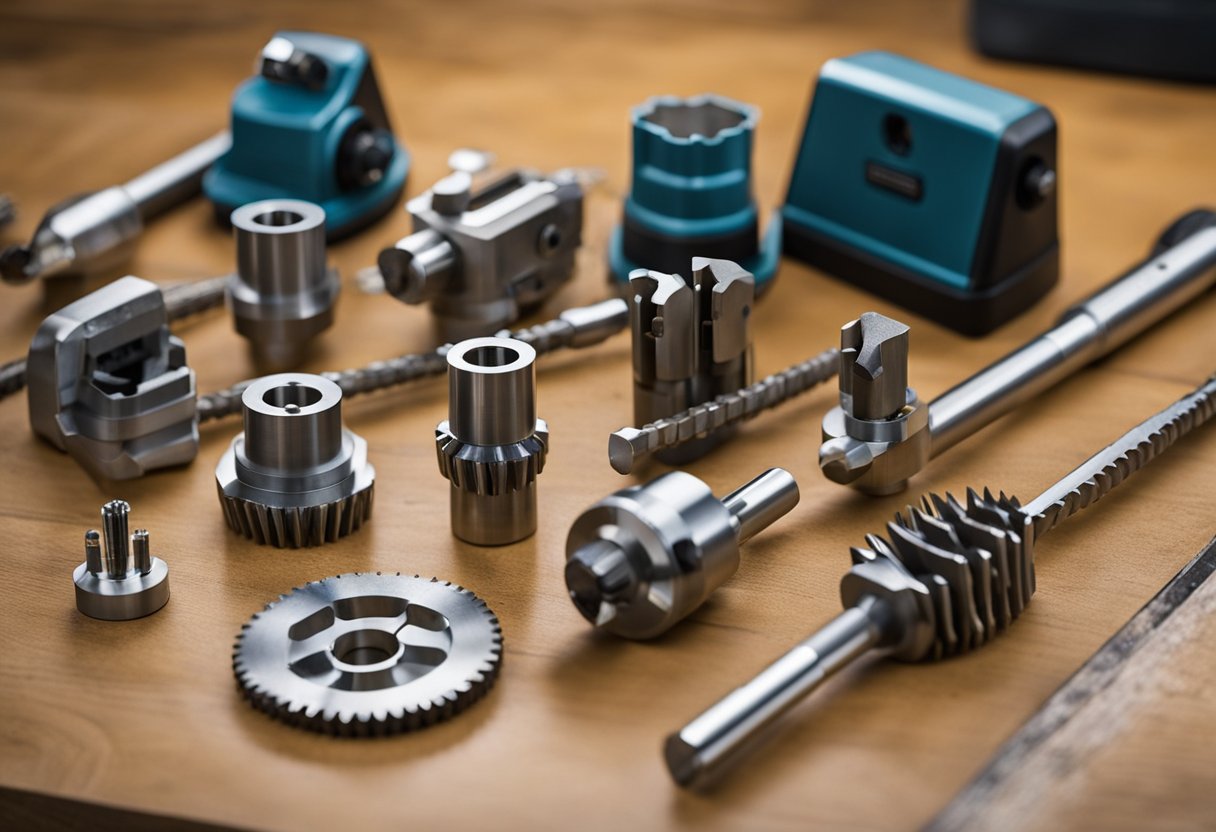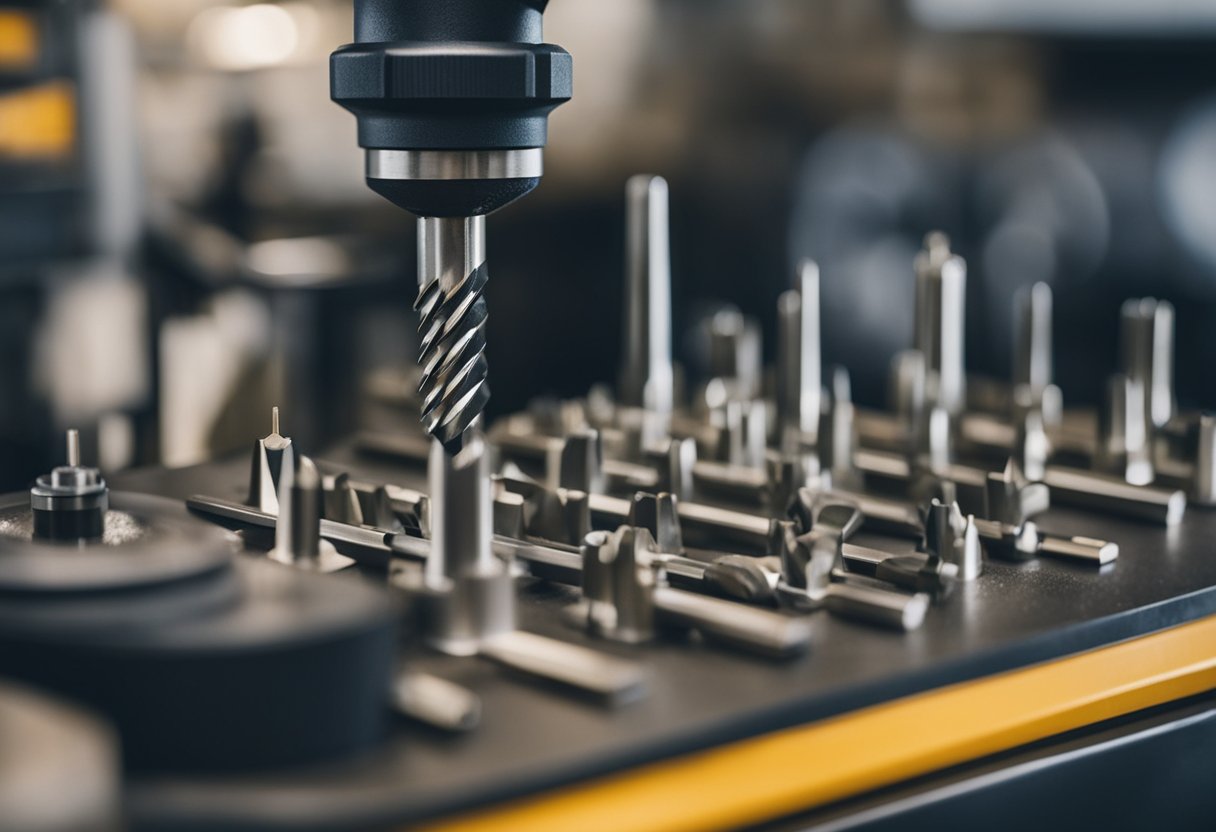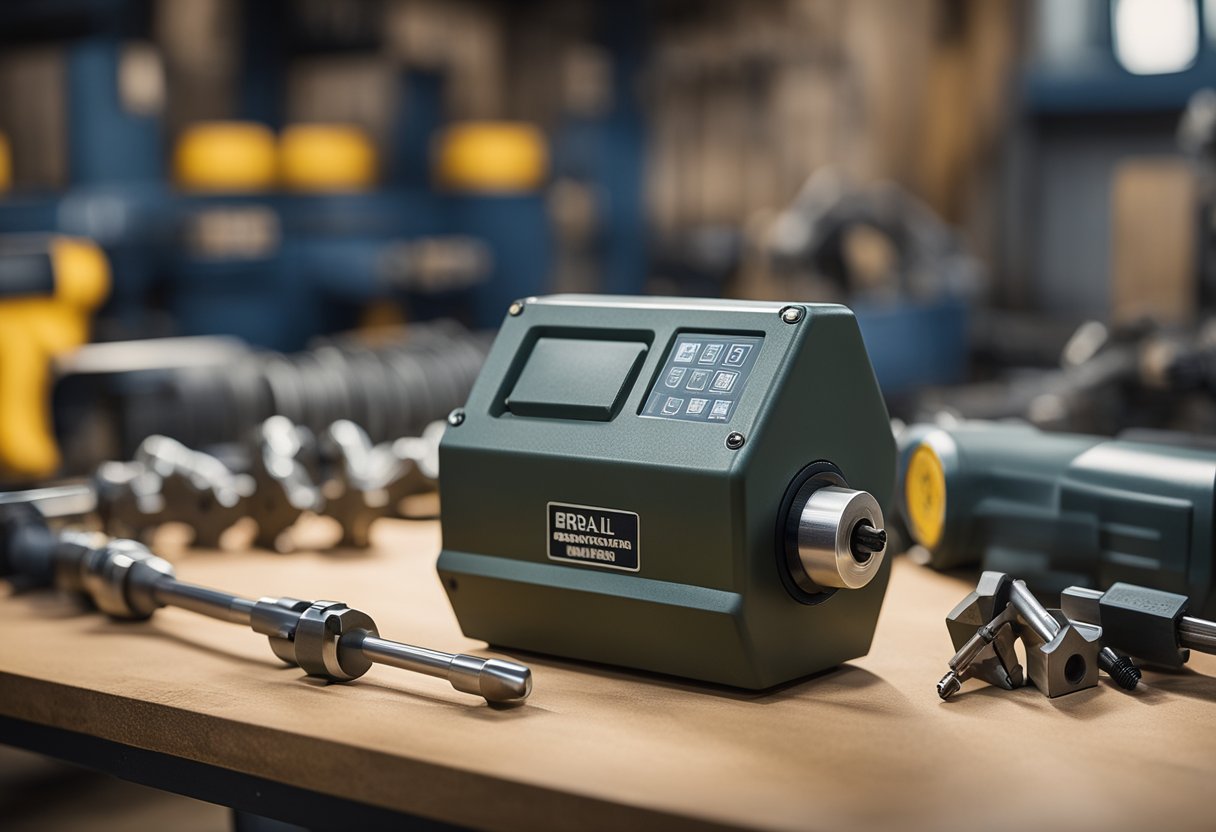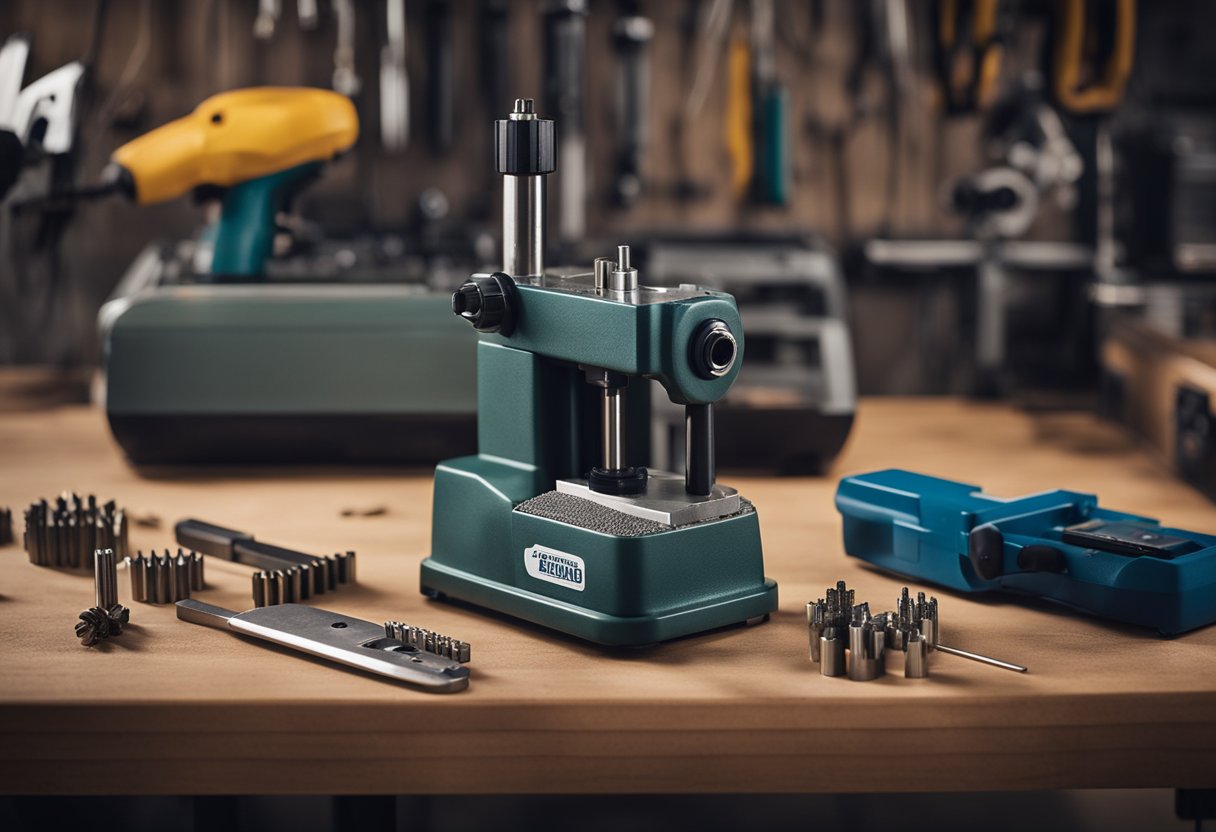As a woodworking enthusiast, I know the importance of having sharp and precise drill bits. Brad point drill bits are especially useful for woodworking projects, as they create clean and accurate holes. However, over time, these bits can become dull and lose their effectiveness. This is where a brad point drill bit sharpener comes in handy.
A brad point drill bit sharpener is a tool designed specifically to sharpen brad point drill bits. It is a must-have for anyone who wants to maintain the performance of their drill bits and save money in the long run. With the right technique and tools, you can sharpen your brad point drill bits quickly and easily, without having to replace them.
Key Takeaways
- A brad point drill bit sharpener is an essential tool for maintaining the performance of your drill bits.
- Understanding the materials and types of brad point drill bits is crucial for effective sharpening.
- Proper maintenance and drilling techniques can help extend the life of your brad point drill bits.
Understanding Brad Point Drill Bits
As a woodworker, I have come across many types of drill bits, but none are as versatile and efficient as the brad point drill bit. Brad point drill bits are specially designed for woodworking and are used to drill precise holes in wood. They are also known as wood drill bits, brad-point bit, or brad-point drill bits.
One of the unique features of the brad point drill bit is the sharp point at the tip of the bit. This point helps to guide the bit accurately into the wood, preventing it from wandering or slipping. The sharp point is also useful when drilling through thin materials, as it helps to prevent the material from splintering or breaking.
Another important feature of the brad point drill bit is the two sharp spurs on either side of the point. These spurs cut into the wood fibers, creating a clean and precise hole. The spurs also help to remove wood chips and debris from the hole, preventing the bit from getting clogged.
Brad point drill bits come in a variety of sizes, ranging from 1/8 inch to 1 inch in diameter. They are most commonly used for drilling holes for dowels, hinges, and other woodworking joints. They can also be used for drilling through other materials such as plastic, aluminum, and brass.
To get the most out of your brad point drill bit, it is essential to keep it sharp. Over time, the sharp spurs on the bit can become dull, making it difficult to drill precise holes. Fortunately, there are many brad point drill bit sharpeners available on the market that can help to restore the bit’s sharpness.
Overall, the brad point drill bit is an essential tool for any woodworker. Its unique design and precise cutting ability make it ideal for drilling accurate holes in wood and other materials. With proper care and maintenance, a brad point drill bit can last for many years, making it a valuable investment for any woodworking shop.
Materials and Types
When it comes to sharpening brad point drill bits, it is important to understand the different materials and types available. Brad point drill bits are typically made from steel, which is a durable and reliable material that can handle a wide range of materials, including wood, plastics, and carbon steel.
One of the most common types of brad point drill bits is carbide-tipped. These bits are designed to handle harder materials, such as hardwoods, and are known for their durability and precision. Carbide-tipped bits are more expensive than standard steel bits, but they are worth the investment if you plan on working with harder materials.
Another type of brad point drill bit is the spade bit. Spade bits are similar to brad point bits, but they have a wider, flat blade that is designed for drilling larger holes. Spade bits are ideal for drilling through thicker materials, such as wood planks and boards.
When choosing a brad point drill bit, it is important to consider the material you will be drilling into, as well as the size of the hole you need to create. A standard steel brad point bit is suitable for most applications, but if you plan on working with harder materials or need to create larger holes, a carbide-tipped or spade bit may be a better option.
In summary, understanding the different materials and types of brad point drill bits available is crucial when it comes to selecting the right bit for your project. Whether you are working with wood, plastics, or carbon steel, there is a brad point drill bit available that is designed to meet your needs.
Sharpening Process and Techniques
https://www.youtube.com/watch?v=sBl5VW_PrZo&embed=true
To sharpen a Brad Point drill bit, I recommend following these simple steps:
-
Begin by securing the drill bit in a vise to prevent it from moving during the sharpening process. Make sure the vise is tight enough to hold the drill bit securely in place.
-
Use a sharpening stone to sharpen the cutting edge of the drill bit. Hold the stone at a 60-degree angle and move it back and forth along the cutting edge of the bit. Apply light pressure and make sure to maintain the angle throughout the process. Repeat this process until the cutting edge is sharp.
-
Once you have sharpened the cutting edge, use a honing stone to remove any burrs that may have formed during the sharpening process. Hold the honing stone at a 45-degree angle and move it back and forth along the cutting edge of the bit. Apply light pressure and make sure to maintain the angle throughout the process.
-
After honing the cutting edge, use a sharpening stone to sharpen the spurs of the drill bit. Hold the stone at a 90-degree angle and move it back and forth along the spur. Apply light pressure and make sure to maintain the angle throughout the process.
-
Finally, use a honing stone to remove any burrs that may have formed during the sharpening process. Hold the honing stone at a 45-degree angle and move it back and forth along the spur. Apply light pressure and make sure to maintain the angle throughout the process.
By following these simple steps, you can ensure that your Brad Point drill bits are sharp and ready for use. Remember to always use caution when sharpening drill bits and wear protective gear such as safety glasses and gloves.
Essential Tools for Sharpening
When it comes to sharpening a brad point drill bit, it’s important to have the right tools on hand. Here are some of the essential tools you’ll need:
1. Grinding Wheel
A grinding wheel is an essential tool for sharpening your drill bits. It helps to sharpen the cutting edges of the bit, ensuring that it cuts through wood cleanly and easily. You can use a bench grinder or a Dremel tool with a grinding wheel attachment to sharpen your brad point drill bits.
2. File
A file is another important tool for sharpening your drill bits. You can use a hand file or a slip stone to sharpen the edges of the bit and remove any nicks or burrs. A triangular needle file is ideal for sharpening the chip lifters on a brad point drill bit.
3. Guide or Jig
A guide or jig can help you maintain the correct angle when sharpening your drill bits. You can use a commercial guide or jig, or you can make your own using scrap wood or metal. A guide or jig can help you achieve a consistent angle and ensure that your bits are sharpened evenly.
4. Vice or Clamp
A vice or clamp is essential for holding your drill bit securely while you sharpen it. You can use a bench vice or a clamp to hold your bit in place while you work on it. This will help you maintain a consistent angle and prevent the bit from moving around while you sharpen it.
5. Power Tools
Power tools such as a bench grinder or a Dremel tool can make sharpening your drill bits faster and easier. These tools can help you remove material quickly and achieve a sharp edge on your bit. However, it’s important to use these tools carefully and follow the manufacturer’s instructions to avoid damaging your bit.
Overall, having the right tools on hand can make sharpening your brad point drill bits easier and more effective. Whether you’re using a grinding wheel, a file, a guide or jig, a vice or clamp, or power tools, it’s important to use these tools carefully and follow the manufacturer’s instructions to achieve the best results.
Drilling and Sharpening Considerations
https://www.youtube.com/watch?v=ZTXakjKSPRc&embed=true
When it comes to drilling, the diameter of the hole and the point angle of the drill bit are two important factors to consider. Brad point drill bits are designed to create precise holes in soft materials, making them ideal for woodworking and other similar applications. However, it is important to note that the size of the hole created by a brad point drill bit is limited by the diameter of the bit itself.
To ensure the best results, it is recommended to use a drill press when drilling with a brad point drill bit. This will help to keep the bit perpendicular to the workpiece, which is crucial for creating accurate and precise holes. Additionally, using a drill press will reduce the risk of splintering or tear-out, which can be a common issue when drilling with hand-held drills.
When it comes to sharpening a brad point drill bit, it is important to focus on the cutting lip. This is the part of the bit that does the actual cutting, and it is crucial to keep it sharp in order to achieve the best results. To sharpen the cutting lip, it is recommended to use a small file or sharpening stone, working slowly and carefully to avoid damaging the tip of the bit.
It is important to note that the point angle of a brad point drill bit cannot be changed, as it is determined by the manufacturer. However, keeping the cutting lip sharp will help to ensure that the bit performs at its best.
In summary, when drilling with a brad point drill bit, it is important to use a drill press to achieve the best results, and to focus on keeping the cutting lip sharp when sharpening the bit. By following these considerations, you can create accurate and precise holes with your brad point drill bit.
Maintaining Cutting Edges
As a brad point drill bit sharpener, I believe that maintaining the cutting edges of the bit is crucial for achieving clean and accurate holes. The cutting edges of a brad point drill bit are the parts that come in contact with the material being drilled, and they need to be sharp and free from any damage to ensure optimal performance.
One way to maintain the cutting edges is to use a honing guide. A honing guide is a tool that holds the brad point drill bit at a specific angle, allowing you to sharpen the cutting edges evenly. By using a honing guide, you can ensure that both the inner and outer cutting edges are sharpened to the same angle, which is essential for achieving clean and accurate holes.
Another way to maintain the cutting edges is to use a sharpening stone or file. When using a sharpening stone or file, it is essential to work slowly and carefully to avoid damaging the cutting edges or the spurs. You should start by sharpening the outside cutting edge first, followed by the spurs, and then the inside cutting edge. It is also important to use the correct angle when sharpening the cutting edges.
Lastly, it is important to regularly inspect the cutting edges of the brad point drill bit for any signs of damage or wear. If you notice any chips or nicks on the cutting edges, it is best to replace the bit to ensure optimal performance.
In conclusion, maintaining the cutting edges of a brad point drill bit is crucial for achieving clean and accurate holes. By using a honing guide, sharpening stone or file, and regularly inspecting the cutting edges, you can ensure that your brad point drill bit performs optimally every time you use it.
Brad Point Drill Bit Sizes and Builds
When it comes to Brad Point Drill Bits, you will find them in various sizes, ranging from 3/32 to 1-1/4 inches. These drill bits are smaller in diameter than spade and Forstner bits, making them ideal for precision drilling tasks. The smaller size also means that they are less likely to wander or drift away from the desired drilling location.
In terms of build, Brad Point Drill Bits are made up of two main parts: the tip and the shank. The tip is the business end of the drill bit and is responsible for creating the hole. It is designed with a sharp point and two spurs that help to guide the drill bit through the material being drilled. The shank is the portion of the drill bit that is held by the drill chuck. It can be round or hexagonal in shape, depending on the type of drill being used.
While Brad Point Drill Bits can be more expensive than other types of drill bits, the precision and accuracy they offer make them worth the investment. They are particularly useful when working with wood, as they create clean, precise holes without splintering or tearing the material.
To ensure that your Brad Point Drill Bits continue to perform at their best, it is important to keep them sharp. You can do this using a sharpening stone or file, as well as a dedicated Brad Point Drill Bit sharpener. Regular sharpening will help to extend the life of your drill bits and ensure that they continue to produce clean, accurate holes.
In summary, Brad Point Drill Bits come in various sizes and builds, making them ideal for precision drilling tasks. While they may be more expensive than other types of drill bits, the precision and accuracy they offer make them worth the investment. Regular sharpening is important to keep them performing at their best.
Other Relevant Drill Bits
While the brad point drill bit is an excellent choice for woodworking projects, there are other types of drill bits that you may need to use depending on the project. Here are a few other drill bits that you may find useful:
Spade Bit
A spade bit is a type of flat wood bit that is used for drilling large holes in wood. It has a flat blade with a pointed tip and two cutting edges. Spade bits are ideal for drilling holes for cable and pipe installations.
Forstner Bit
A forstner bit is a type of drill bit that is used for drilling flat-bottomed holes in wood. It is ideal for drilling holes for dowels and other woodworking projects. Forstner bits have a circular rim with teeth on the edge, which allows them to cut cleanly through the wood.
Flutes
Flutes are the grooves that run along the length of a drill bit. They help to remove chips and debris from the hole as you drill. The number of flutes on a drill bit can vary, with more flutes generally providing a smoother finish.
Lifter
The lifter is the small point at the center of the drill bit that helps to guide the bit into the wood. It also helps to remove chips and debris from the hole as you drill.
Rim
The rim is the outer edge of the drill bit that cuts into the wood. The shape and angle of the rim can vary depending on the type of drill bit.
Chuck
The chuck is the part of the drill that holds the drill bit in place. It can be tightened or loosened to adjust the depth of the hole.
Overall, the brad point drill bit is an excellent choice for woodworking projects, but it’s important to have a variety of drill bits on hand for different projects. By understanding the different types of drill bits and their uses, you can ensure that you have the right tool for the job.
Copyright and Legal Considerations
As a writer and researcher, I take copyright and legal considerations seriously. In this section, I will discuss some of the key issues that arise when writing about brad point drill bit sharpeners.
First and foremost, it is important to understand that brad point drill bit sharpeners are protected by copyright law. This means that any images, diagrams, or written descriptions of these sharpeners may be subject to copyright protection. As such, it is important to obtain permission from the copyright holder before using any copyrighted material in your writing.
In addition to copyright issues, there may be legal considerations to keep in mind when writing about brad point drill bit sharpeners. For example, there may be safety regulations or other laws that govern the use and sale of these products. It is important to be aware of these regulations and laws in order to ensure that your writing is accurate and legally compliant.
Finally, it is important to be mindful of ethical considerations when writing about brad point drill bit sharpeners. This may include issues related to product safety, environmental impact, or labor practices. As a writer, it is important to present accurate and balanced information, while also being mindful of any potential ethical concerns.
In summary, when writing about brad point drill bit sharpeners, it is important to be aware of copyright and legal considerations, as well as any ethical concerns that may arise. By approaching this topic with a confident, knowledgeable, and neutral tone, we can provide readers with accurate and useful information about these important tools.
Frequently Asked Questions
How effective is the JOOLTOOL for sharpening drill bits?
The JOOLTOOL is a versatile tool that can be used for various sharpening tasks, including drill bits. It uses a unique system of abrasive discs that can be adjusted to achieve the desired level of sharpness. While it may not be the best option for heavy-duty sharpening tasks, it is an effective choice for DIY enthusiasts and hobbyists.
What are the benefits of using a brad point drill bit sharpener?
Using a brad point drill bit sharpener has several benefits. It can help you save money by extending the life of your drill bits, as you won’t need to replace them as often. It can also help you achieve more accurate and precise drilling, as sharp bits are less likely to wander or drift off course. Additionally, it can help you maintain the integrity of your workpiece by reducing the risk of splintering or chipping.
Which is better for sharpening drill bits, a bench grinder or a specialized sharpener?
While a bench grinder can be used for sharpening drill bits, it is not the best option. Bench grinders can generate a lot of heat, which can damage the temper of the bit. Additionally, they can be difficult to use for achieving accurate and precise angles. A specialized sharpener, on the other hand, is designed specifically for sharpening drill bits and can help you achieve consistent and accurate results.
Can a dull brad point drill bit be salvaged with a sharpener?
Yes, a dull brad point drill bit can be salvaged with a sharpener. However, it is important to note that not all bits can be sharpened. For example, if a bit has been damaged or worn down to the point where it is too short, it may not be salvageable. Additionally, if a bit has been overheated or damaged in some other way, it may not be possible to restore it to its original condition.
What are the most important factors to consider when choosing a drill bit sharpener?
When choosing a drill bit sharpener, there are several factors to consider. First and foremost, you should consider the type of bits you will be sharpening and ensure that the sharpener is compatible with those types. Additionally, you should consider the level of precision and accuracy you require, as well as the level of convenience and ease of use. Other factors to consider include the price, durability, and overall quality of the sharpener.
Is it necessary to sharpen drill bits or can they just be replaced?
While it is possible to replace drill bits when they become dull or damaged, it is not always necessary. Sharpening your bits can help you save money in the long run and can also help you achieve more accurate and precise drilling. Additionally, sharpening your bits can help you maintain the integrity of your workpiece by reducing the risk of splintering or chipping.

Hi, I’m Sal Muller of Tooltrip.com. My DIY experience led me to understand essential power tools for home projects. Tooltrip.com guides enthusiasts and professionals in choosing right tools for any job. I provide concise top tool reviews for easier, efficient DIY.

